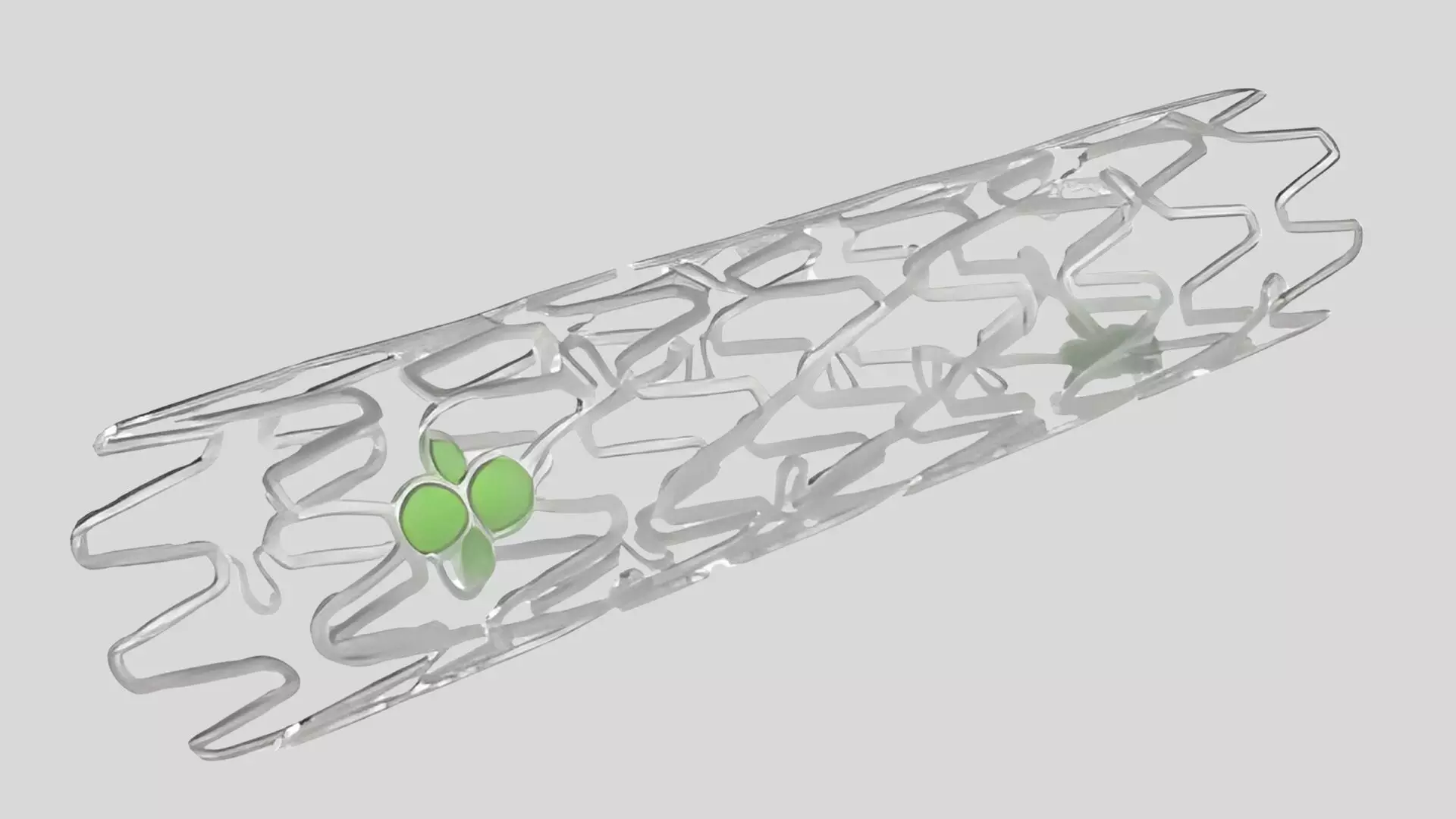IRONMAN-II Trial Evaluates Two-Year Outcomes of Sirolimus-Eluting Iron Bioresorbable Scaffold Versus Everolimus-Eluting Stent: TCT 2025
- byDoctor News Daily Team
- 31 October, 2025
- 0 Comments
- 0 Mins

This news is covered by the Bureau present at the TCT Conference 2025, being held in San Francisco, USA. The two-year results of the IRONMAN-II randomized controlled trial demonstrated that the novel sirolimus-eluting iron bioresorbable scaffold (IBS) was non-inferior to contemporary cobalt-chromium everolimus-eluting stents (EES) in terms of safety and efficacy for patients undergoing percutaneous coronary intervention (PCI) for de novo coronary artery disease. The findings were presented by Dr. Lei Song on behalf of Dr. Runlin Gao and the IRONMAN-II investigators at TCT 2025. The IRONMAN-II trial is a multicenter, single-blind, non-inferiority study conducted at 36 centers across China. It enrolled 518 patients with stable or unstable angina or recent myocardial infarction (>1 week) who were eligible for elective PCI. Participants were randomized 1:1 to receive either the sirolimus-eluting iron bioresorbable scaffold (IBS, n=259) or the cobalt-chromium EES (n=259). All patients had one or two de novo lesions (≤33 mm length) in separate vessels with reference diameters between 2.5 and 4.0 mm. The IBS is a thin-strut (55–65 μm) bioresorbable scaffold made of Fe-0.05%N alloy as backbone material, coated abluminally with a PDLLA–sirolimus layer (8 μg/mm). It provides mechanical strength comparable to metallic stents and is designed to fully resorb over time, potentially reducing long-term risks such as late thrombosis or neoatherosclerosis. The primary endpoint was in-segment late lumen loss (LLL) at two years assessed by quantitative coronary angiography (QCA). Secondary powered endpoints included target vessel quantitative flow ratio (QFR) and cross-sectional mean flow area on optical coherence tomography (OCT). At two years, the IBS met the non-inferiority criterion for the primary endpoint. Mean in-segment LLL was 0.32 ± 0.04 mm for IBS and 0.24 ± 0.04 mm for EES (difference 0.08 mm; 95% CI –0.02 to 0.18; p=0.03 for non-inferiority). Target vessel QFR was 0.90 ± 0.13 in the IBS group and 0.92 ± 0.09 in the EES group (difference –0.02; p=0.05 for non-inferiority). OCT findings showed comparable mean flow areas (6.92 mm² vs. 6.64 mm²; p<0.0001 for non-inferiority). Clinical outcomes at two years were also similar between groups. Target lesion failure (TLF) occurred in 7.4% of IBS-treated patients and 5.4% of EES-treated patients (HR 1.37; 95% CI 0.69–2.73; p=0.37). Rates of cardiac death (0.4% vs. 1.2%), target-vessel myocardial infarction (0.8% vs. 1.6%), and definite or probable device thrombosis (0.4% in both groups) were low and not significantly different. Any revascularization was slightly higher with IBS (17.6% vs. 11.4%; p=0.04), driven by non-ischemia-related procedures. Investigators highlighted that the IRONMAN-II trial is the first randomized comparison of an iron-based bioresorbable scaffold with a modern durable-polymer EES. The device achieved high procedural success at two years. While early results support the safety and efficacy of the IBS, longer-term follow-up will be necessary to assess outcomes after complete scaffold resorption. The IRONMAN-II trial underscores the feasibility of iron-based bioresorbable technology as an alternative to metallic stents, with the potential for durable vessel healing and restoration of natural vessel function once full bioresorption is achieved. Reference:Lei Song et al., Sirolimus-Eluting Iron Bioresorbable Scaffold in Coronary Artery Disease, Two-Year Results of IRONMAN-II Randomized Controlled, TCT Conference 2025, San Francisco. https://www.tctconference.com/ About the Study Presenter:Lei Song, MD. Professor of coronary heart disease and intracoronary imaging and physiology Principal Investigator (PI) of the National Center for Cardiovascular Disease, Chinese Academy of Medical Sciences and Peking Union Medical College, Fuwai Hospital, China, Mentor for the National Interventional Cardiology Training Program, China
Disclaimer: This website is designed for healthcare professionals and serves solely for informational purposes.
The content provided should not be interpreted as medical advice, diagnosis, treatment recommendations, prescriptions, or endorsements of specific medical practices. It is not a replacement for professional medical consultation or the expertise of a licensed healthcare provider.
Given the ever-evolving nature of medical science, we strive to keep our information accurate and up to date. However, we do not guarantee the completeness or accuracy of the content.
If you come across any inconsistencies, please reach out to us at
admin@doctornewsdaily.com.
We do not support or endorse medical opinions, treatments, or recommendations that contradict the advice of qualified healthcare professionals.
By using this website, you agree to our
Terms of Use,
Privacy Policy, and
Advertisement Policy.
For further details, please review our
Full Disclaimer.
Recent News
Scientists discover a hidden antibiotic 100 times...
- 31 October, 2025
Gut microbes may convert fiber into extra calories...
- 31 October, 2025
Who's eligible for faculty appointment? NMC clarif...
- 31 October, 2025
AMU JN Medical College launches code blue emergenc...
- 31 October, 2025
Daily Newsletter
Get all the top stories from Blogs to keep track.


0 Comments
Post a comment
No comments yet. Be the first to comment!